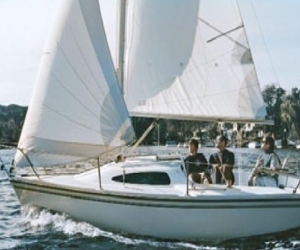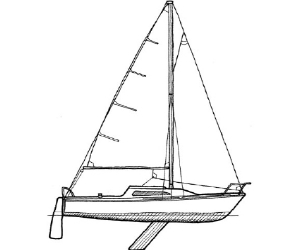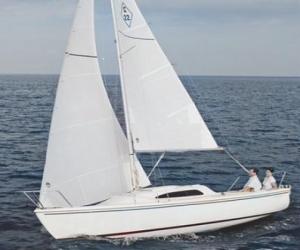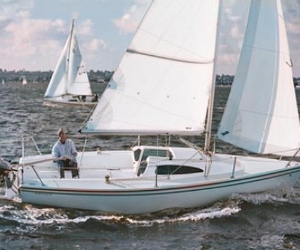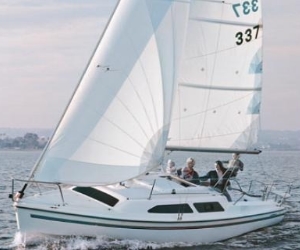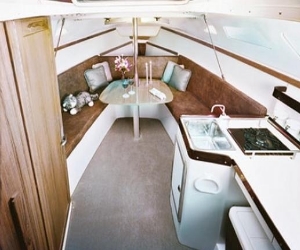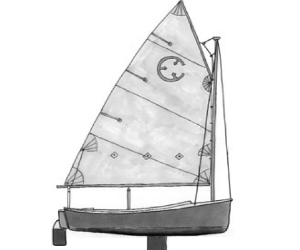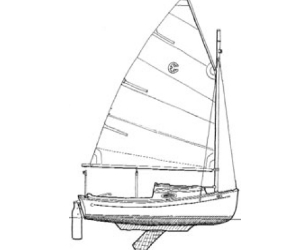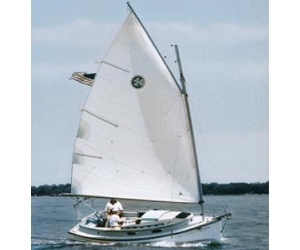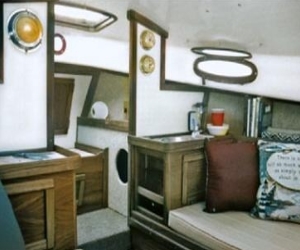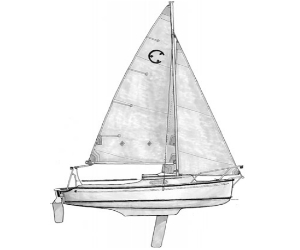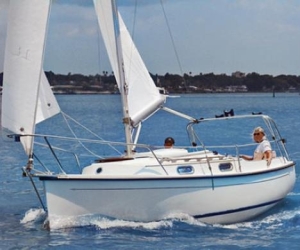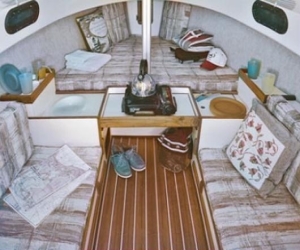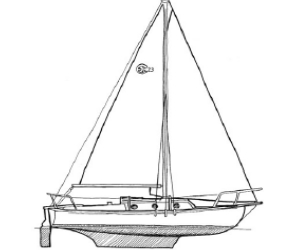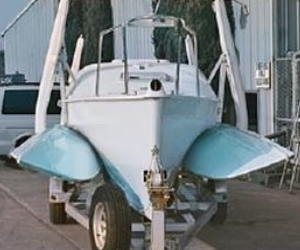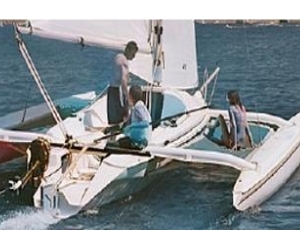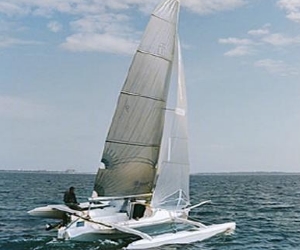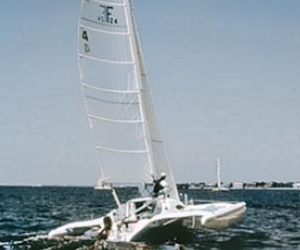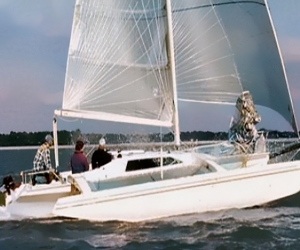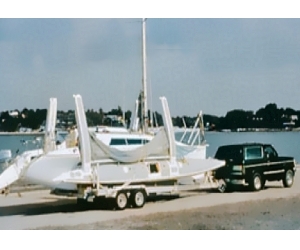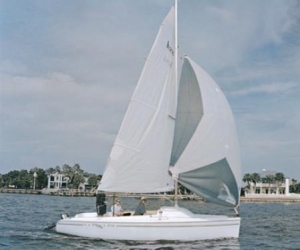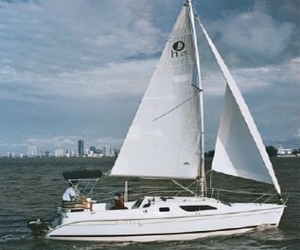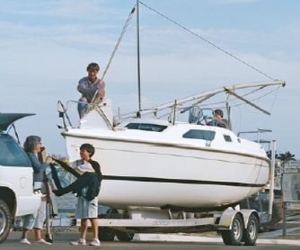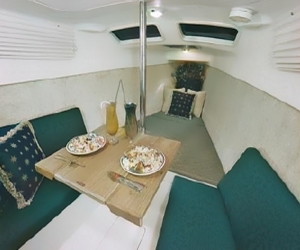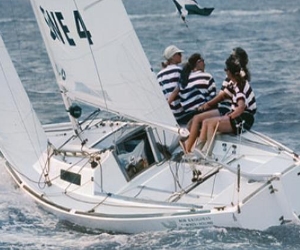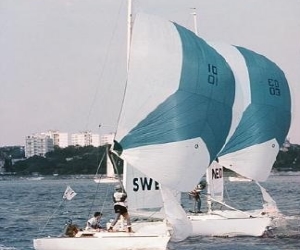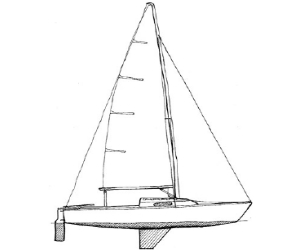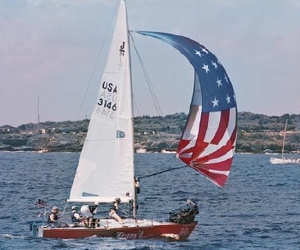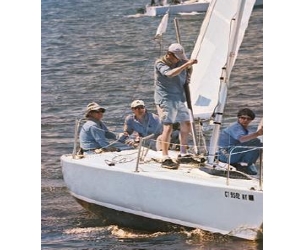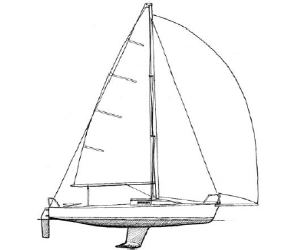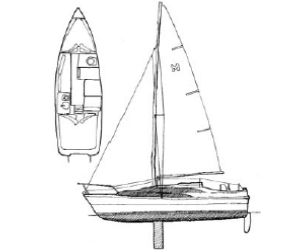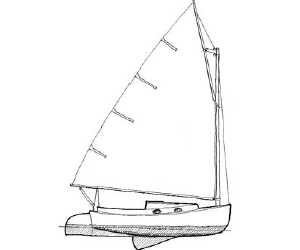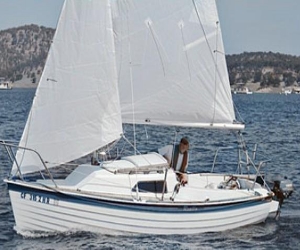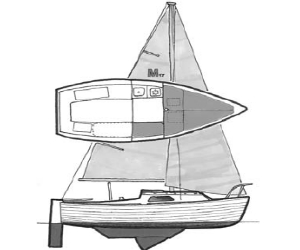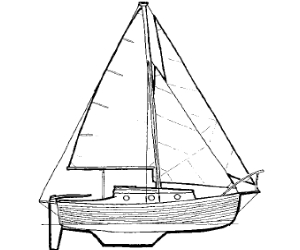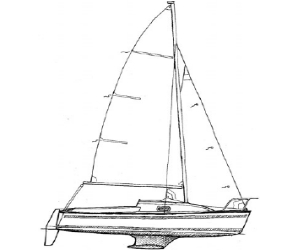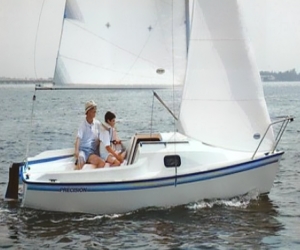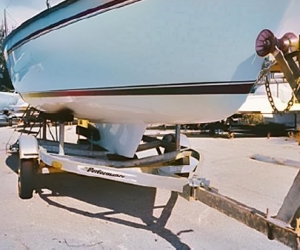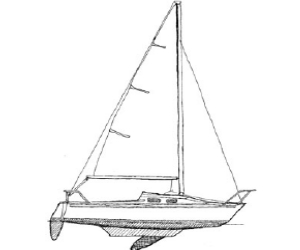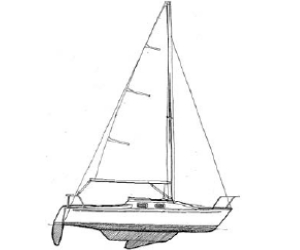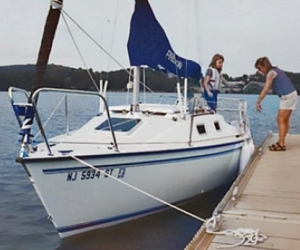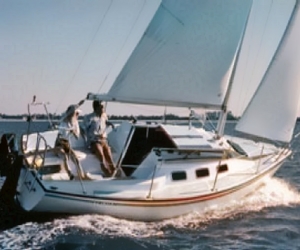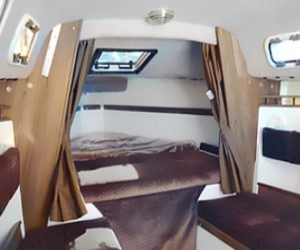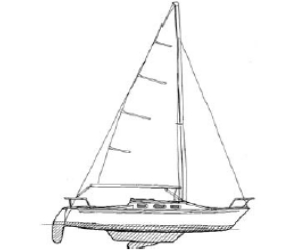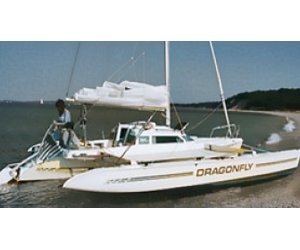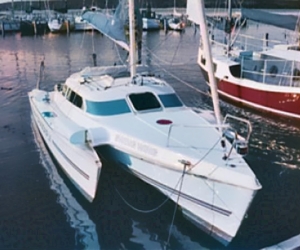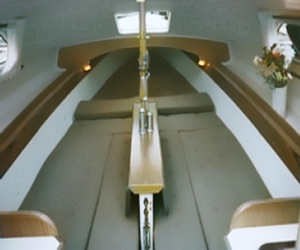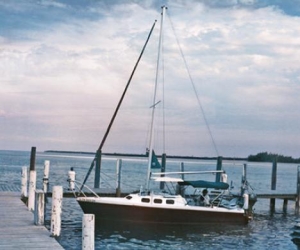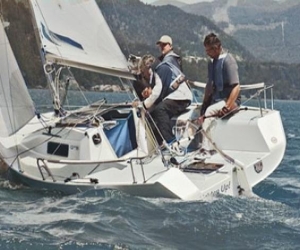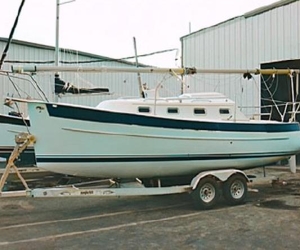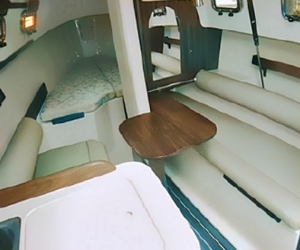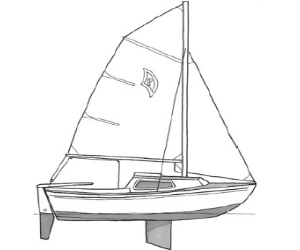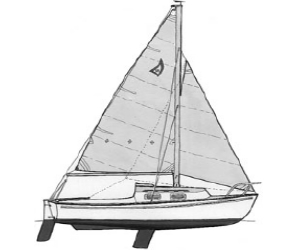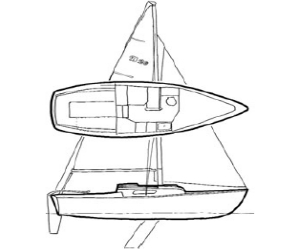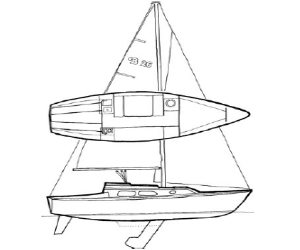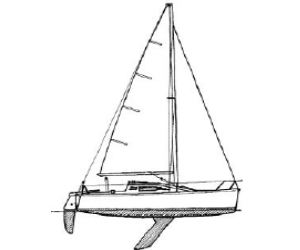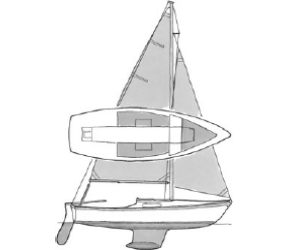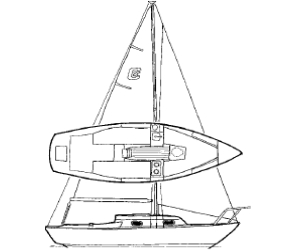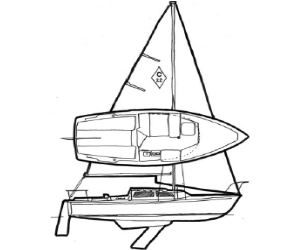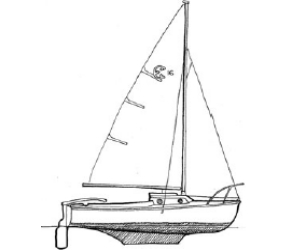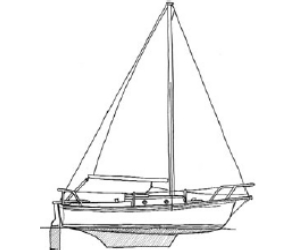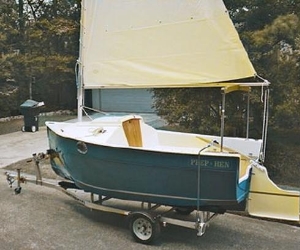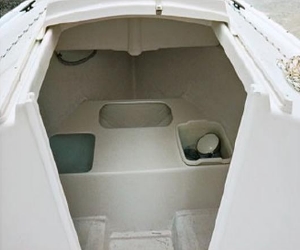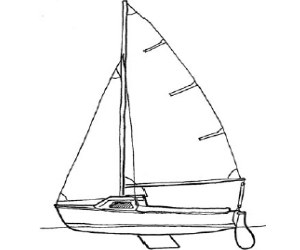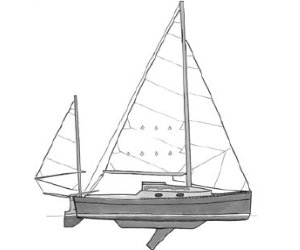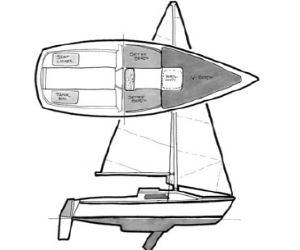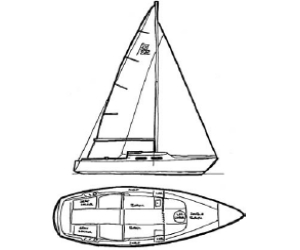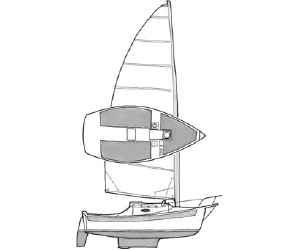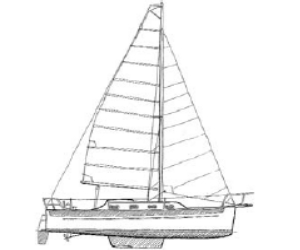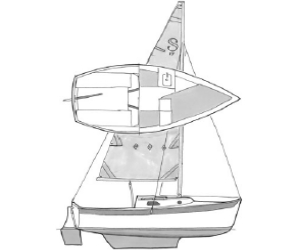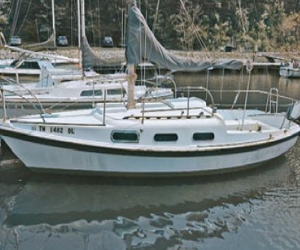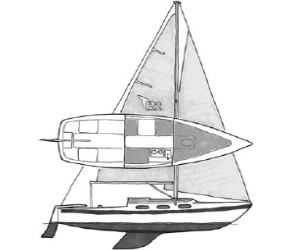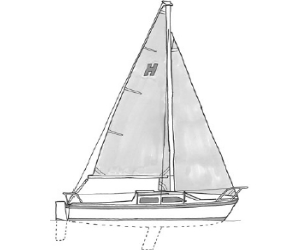Cruising in comfort on a sailboat is an experience that combines the thrill of being on the open water with the luxury of well-thought-out amenities. The key to a comfortable journey begins with choosing the right sailboat and essential boat equipment to provide all the necessary comforts without sacrificing the agility and ease of handling. A sailboat that is around 30 feet or larger typically offers a good balance between space and manageability. Inside, the layout plays a crucial role in ensuring comfort, with a well-designed galley, cozy berths, and a functional bathroom being essential. The interior should be arranged in a way that makes the most of the available space, allowing for easy movement and accessibility.
Equipping the boat with the right features can greatly enhance the comfort of your cruise. Modern sailboats often come with conveniences such as climate control, advanced navigation systems, and high-quality materials that make life onboard pleasant. Investing in comfortable bedding, good-quality cookware, and practical storage solutions can make a significant difference. When it comes to life on the water, safety and comfort are intertwined. Ensuring that the boat is equipped with reliable safety gear, including life jackets, first aid kits, and proper anchoring equipment, is crucial for peace of mind.
Finally, the pace of the journey plays a part in comfort. Cruising at a leisurely pace, with well-planned stops at marinas or sheltered anchorages, allows for relaxation and the opportunity to enjoy the beauty of the surroundings. Good weather planning, including checking forecasts and understanding seasonal weather patterns, also contributes to a smooth and enjoyable sailing experience.
Personal Comforts on Board
On a craft that may be as small as 16 feet and occasionally heeling up to 45 degrees, accomplishing the tasks of daily living takes:
- organization,
- planning,
- and patience.
A sense of balance helps, too. The challenge is part of the fun, however. In this article we examine how you can:
- manage meals;
- a fresh water supply;
- personal storage;
- and that all-important but often-neglected topic – the bathroom on board.
Cooking on a Small Boat
Meals on any sailboat cruise require careful planning, and this is doubly true for a small sailboat. Even for short cruises with a limited crew, you still need careful meal plans for each day of your trip as well as some backup meals in case you are out longer than expected. Dehydrated backpackers’ meals or dry pasta-based one-pot dinners work well for this. Try to limit canned items to singleserving sizes. Once you open a can, you’ve got to use it all, because cooler space is very limited. There are some good galley cookbooks available, and don’t overlook backpacking cookbooks.
You can keep ice for a day or so on a boat in a standard cooler, which is long enough for a night or two of fresh food, milk, and a few cold drinks. After that, it’s either find a marina or do without. You can usually find ultra-hightemperature (UHT) milk – sold in aseptic packaging and needing no refrigeration – in single-serving cartons in the United States; other countries have UHT cream as well. Adding an extra layer of insulation to your cooler will make a small improvement in its ice-holding ability, but don’t expect miracles. The meltwater, if it’s uncontaminated, can be used for rinsing dishes, but I wouldn’t drink it.
Several types of stoves can be used to heat Properly and Safely Storing Food on a Boatfood on a sailboat. There’s no best type, though certain characteristics may cause you to prefer one type over another. Most trailer sailors use a small, single-burner stove, though some have room for a two-burner stove. Below are some of the stove choices. Note that Coast Guard regulations require cookstoves to be secured against movement in heavy seas.
Alcohol Stoves. A few years ago, many boats came fitted with alcohol stoves. Alcohol was believed to be the better fuel for onboard use since the vapors are nonexplosive and have no objectionable odor. I used a pressurized alcohol stove for years, and it worked fine. My current stove is an Origo 1500 nonpressurized alcohol type that works quite well. If your boat has an operational alcohol stove, and you can still get parts for it, you don’t have to replace it until it starts giving you problems.
Alcohol has its drawbacks – it takes longer to boil a pot of water, and fuel spills can burn with an almost invisible flame. Alcohol is expensive if you buy it through most readily available sources, like hardware or drugstores. But denatured alcohol is handy to have aboard since it has medical uses, it’s a good disinfectant, and it thins uncured epoxy.
Gimbaled Stoves. Gimbaled stoves are designed for marine use; they swing from front to back, matching the boat’s movement, and hold up well in damp, salty air. If you have the room, the Optimus Sea-swing is a nice gimbaled stove. Forespar makes one called a Mini-Galley, and Force 10 makes the Seacook. These are all propane models. Gimbaled stoves are about the only cookers you can use when it’s rough, although you probably should skip cooking in a storm. To be mounted properly, they do require some vertical space, which you may or may not have on your boat.
Propane Camping Stoves. Propane camping stoves are readily available, inexpensive, and popular on trailerables as well as larger cruisers. The flame burns hot and clean, with no smoke and little odor. The problem is, other than the gimbaled stoves discussed above, most are not designed for marine use, and may have mild steel parts that can rust out in a few seasons. Some, though, are made of stainless steel. You can extend the life of a camp stove by spraying the entire thing, especially the inside, with silicone wire dryer. It does a fair job of preventing rust but doesn’t contain lubricants, like WD-40, so it feels less greasy after the silicone evaporates. There’s no oil film that could, in theory, ignite.
Another downside is of course the risk of explosion. It is crucial to keep the stove and propane tank leak-free. Don’t unscrew the propane cylinder once you’ve started using it, since the seals on the cylinder can leak once they’ve been installed on the stove and then removed. (An explosion is pretty rare, but I wouldn’t risk it.) Do not store propane cylinders down below! Propane vapor is heavier than air and can settle in the bilge. All you need is a little water and some time – the stove rusts, the tank leaks, the propane settles to the lowest point on the boat, and hopefully you won’t be below when she blows to bits. A chemical called mercaptan is added to propane to make it smell bad, so you’ll know there’s a leak. If you can smell gas, you’ve got a problem. Shut everything off and take the stove immediately to the cockpit until you can sort it out.
Lightweight Backpacking Stoves. These tiny little things do a surprising job. If you haven’t been to an outdoor-gear store in a few years, go have a look at modern backpacking stoves. Some can burn multiple fuels, like alcohol, kerosene, or white gasoline. (I wouldn’t use gasoline in the cabin.) Their tiny size can be their downfall on a boat, though, since they are designed to be used on a very stable surface – the ground. Slippery fiberglass surfaces and the occasional ill-timed boat wake mean that most backpacking stoves need some form of modification to prevent them from slipping. Many also require that the pot stay carefully balanced on the exact center of the stove, which would, of course, be quite difficult on a boat. If you can figure out a way around these requirements, then a backpacking stove might be a workable option.
Fresh Water
Fresh water aboard a boat is always important – you’ll need it for:
- drinking,
- cooking,
- and cleanup (including yourself).
Often the stock water tanks that come with a boat are too small for cruising, and you’ll want to supplement the boat’s capacity. For small boats, the best solution is tanks. Water is, of course, very heavy and needs to be kept well secured in the lowest possible part of the boat. Several smaller tanks of 1 to 2 gallons are better than a single large tank. Collapsible plastic tanks, like those used for camping, are good on a boat, but you must protect them from chafing. A 2-gallon unit with a canvas bag to protect it would work well.
Delivering water to the user is easier with a gravity-fed system than a hand-operated pump. If you have the room, a high shelf near the sink is an ideal place to keep a 2-gallon water jug while you’re at anchor; then you can secure it in a lower spot while you’re underway.
If a gravity system isn’t practical, a foot pump is better than a hand pump. Foot pumps need to be strongly mounted. Hand pumps do have one big advantage – they are such a pain to use, you conserve lots of water. Of course, if you use several small 1-gallon tanks, the water can simply be poured as needed. This low-tech approach saves water but might be tricky if you are bouncing around on a brisk upwind tack. A pressurized water system isn’t really practical on a trailerable sailboat because its complexity reduces tank capacity, and you’d likely run out of water long before your cruise was over.
Read also: Types of Sailboats and Their Management
Showering on board is certainly possible, and really isn’t a big deal. You shower in the cockpit. If you’re in an anchorage with other boats or sailing with a crew, you can shower in a bathing suit. A suit that’s a little baggy or stretchy helps.
Hot water can be supplied two ways. A Solar Shower is a dark-colored bag with a shower nozzle and an on/off spigot; you fill it with water and let it warm in the sun. Hang it from the rigging and let gravity do the work. The water never gets really hot, but it’s certainly better than a cold shower.
An easier system is the garden pressure sprayer. A 3-gallon size works well, and a dark color will warm the water a little in the sun. Or use 2 gallons of cold water and 1 gallon of hot water from the stove.
To take a shower using the minimum amount of fresh water, use a bucket full of salt water for your initial hose-down, then soap up. Use fresh water only for the final rinse. Only a few soaps will lather in salt water – some options are diluted Dawn or Lemon Joy dishwashing detergent (showering with dishwashing liquid tends to dry out your skin, however), Lever 2000 bar soap, Suave shampoo, and specialty soaps for saltwater washing, like:
- SunShower,
- Saltwater,
- Sailor Soap.
Personal Gear
Fortunately, sailing doesn’t require a lot of fancy duds, but some clothes are better choices than others. Certain fibers, such as bleached cotton, are nearly transparent to UV rays, unbleached cotton has a higher SPF. Silk and some high-luster polyesters can protect your skin because they’re reflective. In general, darker colors absorb more UV radiation than lighter colors. Denim blocks UV rays well – it has an SPF approaching 100 – but it isn’t very practical if it gets wet. To check a particular garment to see if it offers sun protection, hold it up to the light. The more you can see through the fabric, the less effective it will be against sunburn.
Specialty fabrics are now available that are lightweight, quick-drying, and offer better sun protection, but they’re usually expensive.
One thing you will need is a good hat, especially if you have a head like mine. Right on schedule, at about age 42, most of my hair disappeared. From the eyebrows up, I now resemble a naked mole rat, so rather than attempt to disguise my obvious middle age, I regularly shave off my remaining air with clippers. Now sunburn happens in the blink of an eye, so a good hat is a requirement. There are many styles to choose from, but something with a wide brim offers more protection for your neck and ears than the typical baseball hat. Whatever you get, make sure it has a chin strap or a collar clip so it won’t blow off, or won’t go overboard if it does happen to blow off.
Good deck shoes are important as well, and there have been some improvements in recent years. Once upon a time, deck shoes meant Sperry Topsiders, but I’ve never liked them – the low-cut uppers make them feel like they’re always slipping off my feet. (And wearing socks with topsiders looks so silly that even I know better and Bozo the clown was a snappy dresser compared to me.) Harken makes deck shoes that lace up like sneakers, and newer styles of deck shoes combine appropriate soles with lace-up security and good looks. A deck shoe’s sole should be covered with ridges that are cut into the sole; they aren’t easily seen unless the sole is bent. Cheap imitation deck shoes have molded-in ridges. Good soles can also be found on sandals and water shoes that are designed to get wet, drain well, and dry quickly.
Where to put your carefully planned wardrobe? Any sailboat that is small enough to be put on a trailer is not going to have a great deal of space down below. Gear nets or gear hammocks are handy for storing clothes along the V-berth. They keep your clothes easily accessible yet out of the way, and they stay put when you’re on a good heel. Also, for fewer wrinkles, roll clothes instead of folding them, and keep them in a soft duffel or canvas bag.
What About the Bathroom?
Some people find it impossible to believe that you, or anyone else, would be crazy enough to sleep on such a tiny vessel as a Buying Trailerable Sailboats: Condition Assessment and Risks trailerable sailboat. They look down below and say, «But where’s the bathroom?»
A few hundred years ago the bathroom, or head, was at the head of the ship, where the breeze was most likely to carry away the smells. Two hundred years later, and it still smells. Nobody likes to talk about the head, and I can’t blame them – it’s an unpleasant, stinky, embarrassingly personal subject – but everyone has to deal with it one way or another.
Like it or not, there’s every indication that most states will eventually become no-discharge zones. This means that you can’t pump any sewage overboard, even if it is through a federally approved treatment system. No-discharge zones apply to blackwater, or sewage. Sink water, or graywater, is usually exempt. This trend has caused a great many complaints from the boating community, citing studies claiming that most pollution is caused by agricultural runoff. But while pumpouts and holding tanks are far from convenient, there is little doubt that stronger pollution regulations are improving water quality.
Trailerables are ahead of the curve in this area. Boats without an installed head, which includes most trailer sailers, are no-discharge vessels. There are some progressive ways for handling waste that would make it easy for small and large boats alike to comply with nodischarge regulations. We’ll look at these in a moment.
Installed Heads. On larger boats of 25 feet or so, you might find a permanently installed head. These are what some consider to be Public Enemy Number Two. They’re hated by environmentalists and boatowners alike, especially those who’ve had to repair them more than once. See the procedures and regulations for MSDs (marine sanitation devices) under «Equipment of a Sailboat: What You Need to Have on Board While SailingUSCG-Required Equipment».
If you’re considering a boat with a permanently installed head and you’ve never used one, be sure to ask the seller for detailed instructions about using it. Never make assumptions about a head installation. One big thing to remember is that they are very easily clogged – and there are no plumbers at sea. It’s said that something as small as a match will clog one. I’m too much of a coward to see if it’s true. Fixing a clogged marine head is an extremely unpleasant experience. The only thing that it can take is toilet paper, and I’d recommend the special quick-dissolving kind sold by marine and RV suppliers. Another important thing to remember is to open the seacock before operating the pump. If you forget, and bust a hose – just thinking about that possibility makes me a little ill.
The Portable Head. Much more common on small boats is the ubiquitous porta-potty. These are small, selfcontained toilets that include a seat, lid, storage tank, water supply, and pump for rinsing the bowl. Most are sufficient for two adults over a long weekend. The storage tank gets dumped – carefully – into an onshore toilet. Portable heads are usually made of plastic and cost in the neighborhood of $70 to $150. At that price, it’s an item that I’d much rather replace every few years than attempt any sort of repair or rebuild. My MacGregor 222 came with a porta-potty that hadn’t been used in years, though the lower waste tank was about halffilled with – something liquid. It also seemed to be under pressure. I treated it like a hand grenade with the pin halfway out, and very carefully, very gently, placed it in the garbage can and bought a new one.
The best thing about portable heads is their simplicity; they have few moving parts. They have two tanks – the upper tank holds a small amount of water for rinsing the bowl, and the lower tank holds the waste. A small bellows pump squirts in a little rinse water, and a trap allows waste to drop from the bowl into the tank. The drawback is limited capacity. The lower tank typically stores
to 5 gallons. Of course, there’s the pleasure of lugging around a tank full of liquid poop, and the delightful smell as you dump it in a toilet somewhere. Actually, if you use the manufacturer’s recommended chemicals, it’s quite a bit less nauseating than the untreated stuff.
Note that in some areas, such as Ontario, portable heads are illegal. Any boat must have a permanently installed head, with a deck fitting for pumpouts and a vent fitting. Check local laws and ordinances concerning heads before you cruise.
Portable heads aren’t as bad as you might think. Yes, they are small, and they’ll seem a little unsteady at first, but there are optional brackets to keep the thing in place. While some are slightly better than others, they all work pretty much as advertised.
Alternative Head Systems. Both the permanently installed head systems and portable heads have one thing in common, and that’s water. Just like our flush toilets at home, they use water to move things along through the system and to control odors (somewhat) by sealing them from the air. This works fine if you’ve got plenty of water and a sewage connection to carry things away, but if you don’t, things just don’t work as well.
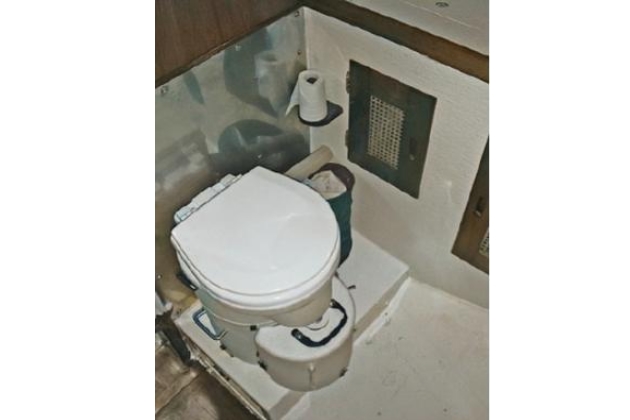
An alternative way of thinking is to keep things as dry as possible and control odors by other methods. Waste can be broken down by two types of bacteria – anaerobic and aerobic. Aerobic:
- bacteria require oxygen to grow;
- anaerobic bacteria do not.
Anaerobic bacteria produce methane, hydrogen sulfide, and other gases that smell terrible. Aerobic bacteria produce carbon dioxide, which is odorless by itself.
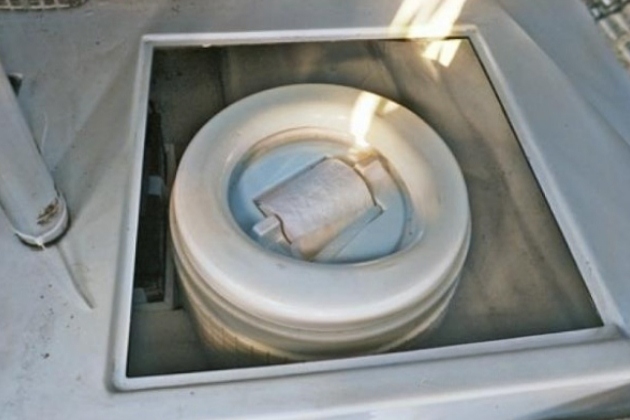
Composting toilets are an alternative to the traditional permanent head installation; they use aerobic bacteria to break down waste. They require a little peat moss every once in a while to keep them going, and have a small fan to supply the air that the bacteria need to survive. Composting heads have a special bowl that separates urine from feces, which keeps odors down and increases the capacity of the system. A special storage bottle holds urine until it can be dumped on shore. A composting head is expensive, at about $1 200 for a complete installation, though for a large boat it makes a lot of sense.
Smaller boats require simpler solutions. Again we can turn to our backpacker friends for help. One of the better solutions is the Wag Bag.
What is Wag Bag?
Wag Bag – these are biodegradable plastic bags that contain a substance called Pooh Powder. The powder locks urine into a gel, much like a baby’s diaper does. It also deodorizes and begins decomposing solid waste.
Wag Bags were used by the thousands in the aftermath of Hurricane Katrina in New Orleans, so they’ve passed the test. They are landfill-safe and legal to toss in normal garbage containers or dumpsters. One bag is reportedly good for five or six uses, and a twelve-bag supply costs about $26. They can be purchased from boat chandleries like Boat US or West Marine, or ordered directly from the manufacturer, Phillips Environmental Products. The Wag Bag is an innovative and functional system with no holding tanks or dumping of liquid.
Other manufacturers make similar systems that are variations on the garbage-bag theme. One is a potty seat that fits tightly on a standard 5-gallon bucket. (Or you could get creative and build your own with a trip to a builder’s supply. Line it with a heavy-duty plastic bag and toss in your own powder.) Another option (from NRS Paddlesports) is the Groover Tamer. This is a powder and spray system – the powder can treat up to 40 pounds of waste, and the spray deodorizer is good for 850 applications.
Simpler still is something called the sawdust toilet, sometimes used ashore in places where Marine Plumbing – Systems and Materialsplumbing and septic systems are unavailable. It’s a composting system where sawdust is used as a carbon-rich cover material that jump-starts the composting process. As long as the waste remains covered with an adequate amount of sawdust, there is supposedly little odor. The «system» is simple, and uses a 5-gallon bucket. As it is filled with waste and sawdust, it’s dumped in the center of an oxygen-rich compost pile. The heat from the compost pile kills pathogens, and after about a year the compost is completely inert. Although sawdust works best, other cover materials such as peat moss, rice hulls, or leaf mold (partially composted, finely chopped leaves) can be used. Waste must always be covered with a layer of clean organic material. The sawdust toilet and other forms of composting are covered in detail in The Humanure Handbook by Joseph Jenkins.
Though the sawdust composting toilet was not designed for boat use – one can hardly have a compost pile on a boat – it seems that some version could be used on board, especially if you could find an inexpensive dry additive that would promote aerobic bacteria. Hydrogel powder in the form of soil additives and/or a compost activator (such as Espoma’s Organic Traditions Bio-Accelerator, 4 pounds for $19) might improve such a system. Venting the head area with a solar ventilator might be required, but this would be a welcome addition no matter what form of head you use. You’d have to do some experimenting to see what will work on a boat, but this is an area that could reap some real benefits for the cruising community.
The Trailer Sailboat Gallery
Hundreds of boats that could be called trailerable have been built over the years, so obviously it’s impossible to show all the current options. If we modify our parameters to include some provision for sleeping, the list becomes more manageable. Even so, this is not a complete listing of all fiberglass trailer sailers with cabins. I’ve tried to include descriptions of as many boats as possible, especially current production models. My hope is that the range of boats shown will give you an idea of your choices.
Every effort was made to ensure that the data in this section is accurate, but the statistics for each boat may vary slightly from what you see here. I listed approximate prices for new boats for comparison, but they will surely have changed by the time you read this. Used boat prices can vary greatly – consult NADA or BUC price guides for that information. (See the Bibliography.)
Boats Currently in Production
Catalina. Catalina Yachts has been in business a long time and has built a lot of boats. It’s the creator of what is arguably the king of trailerable sailboats, the Catalina 22. More than 10 000 Catalina 22s have been built over the years. (See below for a guide to used Catalina 22s.) Catalina Yachts has weathered quite a few industry recessions, and still builds capable boats at reasonable prices. Its current line of trailerable boats contains several from 18 to 25 feet that feature a functional sailing platform plus fairly nice accommodations belowdeck.
Com-Pac Yachts/The Hutchins Company. The Hutchins Company was founded in 1957 by Les Hutchins, Sr., an inventor and entrepreneur. In the 1970s he combined a personal interest in sailing with a desire to diversify his company, and commissioned Clark Mills to «put a big sailboat in a small package». The result was the Com-Pac 16, first introduced in 1974. It was among the first small boats available with shoal-draft, fixed keels. The Com-Pac 23 and 19 were added to the line, and these boats are now considered classics. Com-Pac owners are passionate about their boats, and used models in reasonable condition are quickly snapped up. Com-Pac’s current line of trailerable boats blends classic styling with contemporary hull forms, and even includes several catboat designs.
Corsair Marine. Corsair Marine was established in 1984 by Australian designer and multihull pioneer Ian Farrier. He resigned from the company in 1991, but Corsair continued to build small and large multihulls with a reputation for speed.
Ensign Spars. Ensign Spars is a small company in Dunedin, Florida, that builds the Ensign Classic, a reproduction of Carl Alberg’s Electra Day Sailer, originally built by Pearson in 1962. It remained in production until 1983.
If you’re a fan of traditional boats, the new version by Ensign Spars is a sight to behold. It’s a very good-looking vessel, with plenty of varnished teak and glossy new Manufacturing of Fiberglass Boats and Design Featuresfiberglass surfaces – a real head-turner. Ensign uses the original molds, which they purchased from Pearson when they went out of business.
The boat has a large cockpit and a small cuddy cabin with a couple of berths and not much else. The Ensign still has an active racing fleet and web presence.
| Ensign Classic | 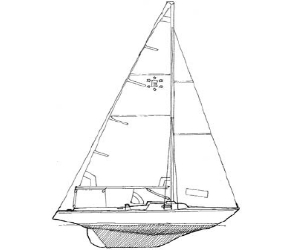 | LOA | 22′ 6″ |
| LWL | 16′ 9″ | ||
| Beam | 7′ 0″ | ||
| Draft | 3′ 0″ | ||
| Displacement | 3 000 lbs | ||
| Ballast | 1 200 lbs | ||
| Sail area | 235 sq. ft | ||
| Mast height | 32′ above waterline | ||
| Designer | Carl Alberg |
Etap Marine. Etap is a Belgian builder of lightweight performance sailboats. They build two trailerable models, the 21i and the 24i. The company was bought by Dehler Sailboats in 2008, who says they intend to increase production of Etap boats.
| Etap 21i | Etap 24i | |
| LOA | 21′ 6″ | 26′ 4″ |
| LWL | 20′ 6″ | 22′ 0″ |
| Beam | 8′ 2″ | 8′ 2,5″ |
| Draft | 2′ 4″/4′ 3″ (shoal keel/deep keel) | 2′ 9,5″/4′ 11″ (shoal keel/deep keel) |
| Displacement | 2 712 lbs/2 601 lbs (shoal keel/deep keel) | 4 012 lbs/3 968 lbs (shoal keel/deep keel) |
| Ballast | 771 lbs/661 lbs (shoal keel/deep keel) | 1 145 lbs/1 101 lbs (shoal keel/deep keel) |
| Sail area | 256 sq. ft | 327 sq. ft |
| Mast height | 34′ 2″ above waterline | 38′ 1″ above waterline |
| Designer | Etap Yachting | Etap Yachting |
Hunter Sailboats. Hunter is another old name in the sailboat business. In the past the company built several trailerable models with sleeping accommodations; their current offerings are mostly larger boats, but they still build two trailerable boats with cabins.
J-Boats. J-Boats has built a reputation as one of the world’s leading performance brands with boats between 22 and 65 feet. Its two smallest boats are trailerable but require a crane or hoist for launching. Most places hosting J-class races have a hoist to get boats in and out of the water. All trailerable models have deep-draft high-performance keels.
MacGregor. Although MacGregor was one of the early leaders in trailerable sailboat design, the company has trimmed its offerings to one model – the MacGregor 26 PowerSailer. (The latest version of the Powersailer is the 26M, introduced in 2003, which features a rotating mast and a daggerboard. Earlier models had a centerboard.) These are designed to take up to 50 hp Boat Outboard Motorsoutboard motors, and the water-ballasted hulls are able to plane under power. This ability necessarily sacrifices some sailing performance, but for some people this is an acceptable trade-off. It’s not a new idea – Lancer made a powersailer model back in the 1980s. Owners report that you have to allow 95 to 105 degrees to tack the boat, and it needs to be reefed earlier than a typical 25-footer, but then again not many 25-footers can go upward of 20 knots under power.
Montgomery Boats/Nor’Sea Yachts. This yard, started by Jerry Montgomery in the mid-1970s, built one of Lyle Hess’s designs for a small, seaworthy trailerable known as the Montgomery 17. The company also built a smaller sister called the Montgomery 15. The 15 wasn’t designed by Hess but was built to have similar characteristics. Though the boats performed well and were popular, Jerry sold the yard to someone who allegedly took deposits on boats that were never built, and the fate of the molds became uncertain. Fortunately, the molds and building rights were obtained by Nor’Sea Yachts, and these stout little ships are now being built by Bob Eeg in California. Jerry Montgomery is still active in the sailing community at the time of this writing, providing consulting and rigging services for small-boat owners. My own boat, Tiny Dancer, is a 1979 Montgomery 17, and if I ever win the lottery, I’ll have Bob build me a 23.
Performance Cruising. The Telstar 28 story goes back to the early 1970s, when Tony Smith’s original Telstar 26 was launched in England. After building nearly 300 boats, he moved the factory to Maryland. A fire in 1981 destroyed the original molds, but the 26 continued to be rebuilt and redesigned over the years. In 2003, the Telstar 28 was born, a direct descendant of the earlier boats. The Tips on Rigging a Boat and Using Knots in Sailing rigging attaches to the main hull, allowing the smaller outer hulls – called amas – to be folded quickly, even when the boat is in the water. The folding mechanism enables the boat to be kept in the water with either or both outriggers retracted. The Telstar 28 includes a patented mast raising/lowering system that lets a single person lower the mast on the water. Like the earlier boats, it’s built by a small family-run business directly on the waterfront, which is becoming a very rare thing these days. More than sixty of the new Telstar 28s have been built so far.
| Telstar 28 | 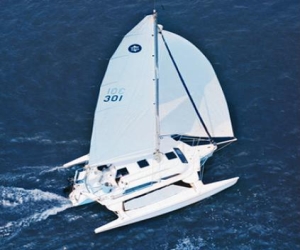 | LOA | 7′ 8″ |
| LWL | 26′ 6″ | ||
| Beam | 8′ 6″ folded; 18′ 0″ extended | ||
| Draft | 12″/4′ 3″ (cb up/down) | ||
| Displacement | 3 000 lbs | ||
| Ballast | none | ||
| Sail area | 524 sq. ft (main and genoa) | ||
| Mast height | 35′ 6″ |
Precision. Precision Sailboats is one of the three oldest builders in the trailerable sailboat industry, and one of the few that are still family owned. Precision boats, designed by naval architect Jim Taylor, have a reputation for high quality and speed.
Quorning Boats. Quorning, a Danish company that has been building boats since 1967, produces a trailerable trimaran, the Dragonfly 800. Like most tris, it’s lightweight and very fast. Quorning’s swing wing system allows the amas to pivot aft using a winch in the cockpit, and the amas can be folded while the boat is underway. This makes it possible to dock the boat in a regular slip, something that is difficult or even impossible for some trimarans. For trailering, the amas are placed upside down on the center hull’s deck; the mast and crossbeams are carried in between the amas. Setup time is reported to be about half an hour.
General Boats
SailSports, Inc./US Yachts. SailSports, Inc., is the builder of the Ultimate 20 and the Ultimate 24. These two boats are primarily racing machines, though there is a cabin for overnighting. Designed by Jim Antrim, these boats are (according to the company’s description) intended for «fast, fun, friendly, and fair sail racing competition».
Sea Pearl/Marine Concepts. Marine Concepts has built a number of boats over the years but is currently concentrating on a single model, the Sea Pearl 21 (and a trimaran version of the same hull).
| Sea Pearl 21 | LOA | 21′ 0″ |
| LWL | 19′ 0″ | |
| Beam | 5′ 6″ | |
| Draft | 6″/2′ 6″ (cb up/down) | |
| Displacement | 600 lbs | |
| Ballast | none (water ballast) | |
| Sail area | 136 sq. ft (standard Marconi rig) | |
| Mast height | 19′ 6″ from waterline |
Seaward/Hake Yachts
Stuart Marine. Stuart Marine is a small company in Maine that builds classic fiberglass boats. They can build three sailing designs:
- the Rhodes 19;
- the O’Day Mariner;
- and the JC9 sailing dinghy.
Only the Mariner has a small cuddy cabin for possible overnight use. Stuart Marine is also a source for replacement parts for the Rhodes 19 and O’Day Mariner. The Mariner has an active racing fleet and class association.
| O’Day Stuart Mariner | LOA | 19′ 2″ |
| LWL | 17′ 9″ | |
| Beam | 7′ 0″ | |
| Draft | 3′ 3″ (keel) | |
| 10″/4′ 11″ (cb up/down) | ||
| Displacement | 1 435 lbs (keel) | |
| 1 305 lbs (cb) | ||
| Ballast | 440 lbs (keel) | |
| 320 lbs (cb) | ||
| Sail area | 185 sq. ft | |
| Mast height | 27′ 10″ | |
| Designer | Philip Rhodes (1963) | |
| Number produced | 4 193 (O’Day, Rebel Industries, and Stuart Marine) |
Tremolino Boat Company. Tremolino. The Tremolino is an interesting concept in multihull sailboats. The idea was developed by John Olin and Dick Newick, designer of the famous OSTAR trimaran Moxie. John started the Tremolino Boat Company in 1975. The factory builds the center hull; you add your own outer hulls and rig from an old Hobie 16 (or the factory can supply them for you). Options include a taller rig from the Supercat catamaran. John Olin passed away not too long ago; the new builder of the Tremolino is Bill Dunn, located in Port Washington, Wisconsin. You can also order plans for a home-built version.
| Tremolino | LOA | 23′ 6″ |
| LWL | 21′ 10″ | |
| Beam | 16′ 6″ (standard) | |
| 18′ (optional) | ||
| Draft | 1′ 3″/4′ 0″ (cb up/down) | |
| Displacement | 950 lbs | |
| Ballast | 1 200 lbs | |
| Sail area | 239 sq. ft | |
| Mast height | 29′ 0″ (above waterline) | |
| Designers | Dick Newick and John Olin |
West Wight Potter/International Marine. The West Wight Potter is a boat of legendary stature. Originally built in England, the early Potters were 15 feet long and made of plywood. One of the first Potters in the United States was sailed across the Atlantic. While today’s version has been updated considerably, Potters still retain their distinctive hard chine hull form – one of the only production fiberglass boats to do so. This boat was made famous by author Larry Brown’s Sailing on a Micro-Budget. While the price of any new sailboat isn’t exactly microscopic, the Potter is one of the most affordable small cruising boats available. (I’d always wanted a 19 myself, until I discovered my Montgomery.)
Used Sailboats
Balboa
Beneteau. Beneteau is a large multinational sailboat company, with five factories in France, one in Marion, South Carolina, and two factories that specialize in commercial fishing boats. They are primarily a builder of large yachts, but they built a few trailerable models – one that’s commonly available in the United States is the First 235. Over 450 boats were built in their South Carolina plant, and another 410 in France between 1986 and 1993. It was available in three different keel configurations:
- a deep-draft fin keel;
- a shoaldraft wing keel;
- and a centerboard version.
Cal
Cape Dory
Catalina
Com-Pac
Florida Bay Boat Company
Hunter Marine Corp. Hunter Marine has produced several trailerable boats. These are just a few.
| Hunter 18.5 | Hunter 19 | Hunter 20 | Hunter 212 | Hunter 22 | Hunter 23 | |
| LOA | 18′ 5″ | 18′ 8″ | 19′ 8″ | 21′ 0″ | 22′ 3″ | 23′ 3″ |
| LWL | 15′ 6″ | 14′ 7″ | 15′ 6″ | 18′ 0″ | 18′ 4″ | 19′ 7″ |
| Beam | 7′ 1″ | 7′ 4″ | 7′ 6″ | 8′ 2″ | 7′ 11″ | 8′ 0″ |
| Draft | 2′ 0″ | 7″/4′ 6″ (cb up/down) | 15″/4′ 0″ (cb up/down) | 10″/5′ 0″ (cb up/down) | 23″/5′ 0″ (cb up/down) | 2′ 3″ |
| Displacement | 1 600 lbs | 1 200 lbs | 1 700 lbs | 1 800 lbs | 3 200 lbs | 2 450 lbs |
| Ballast | 520 lbs | 400 lbs | 130 lbs | 1 300 lbs | 800 lbs | |
| Sail area | 178 sq. ft | 166 sq. ft | 170 sq. ft | 213 sq. ft | 220 sq. ft | 235,5 sq. ft |
| Mast height | 27′ 5″ | 29′ 6″ | 31′ 0″ | 26′ 0″ | 33′ | |
| Years manufactured | 1987-93 | 1981-83 | 1983-84 | 1998- | 1981-85 | 1985-92 |
Jeanneau. The French company Jeanneau has been building fiberglass boats since 1958. Some of their boats were built in the United States under license between 1970 and 1990, but ownership reverted to Jeanneau France with the demise of many US manufacturers. They’ve since been acquired by Beneteau, making the combined group the largest sailboat manufacturer in the world.
Of their many models, the Tonic 23 is a good example. Produced between 1985 and 1990, it shows some of the styling that these boats have become known for.
| Tonic 23 | |
| LOA | 23′ 11″ |
| LWL | 22′ 7,5″ |
| Beam | 9′ 2,5″ |
| Draft | 3′ 6″ (keel) |
| 2′ 4″/4′ 6″ (cb up/down) | |
| Displacement | 2 866 lbs (keel) |
| 2 932 lbs (cb) | |
| Ballast | 992 lbs (keel) |
| 1 058 lbs (cb) | |
| Sail area | 243 sq. ft |
| Mast height | 32′ 6″ |
| Designer | Philippe Harle |
Melen Marine
| Sparrow 12/Guppy 13 | I’ve included this boat mainly to show just how small a boat with a cabin can get. The Sparrow was designed by Herb Stewart, designer of the famous West Wight Potter. The Guppy was built by Melen Marine, which went out of business in 1977. The Guppy was identical to the Sparrow in all but the smallest of details; there was even a court case accusing Melen of making a splash mold (where an existing boat is used to make an illicit copy of another boat). This boat is so small that it could probably be towed considerable distances with nothing more than a couple of teenagers and a six-pack of Jolt | LOA | 12′ 0″ |
| LWL | 10′ 11″ | ||
| Beam | 5′ 8″ | ||
| Draft | 1′ 8″ (fixed) | ||
| Displacement | 350 lbs | ||
| Ballast | 130 lbs | ||
| Sail area | 73 sq. ft | ||
| Designer | Herb Stewart | ||
| Years manufactured | 1969-? |
Newport
Nimble Boats. The molds for most of the Nimble line were acquired by Marine Concepts in Florida, builders of the Sea Pearl. According to Marine Concepts, the molds are in poor condition and the boats will not be built; they’ll instead concentrate on the Sea Pearl 21. The last time I checked, Nimble Boats was for sale, so if you’ve ever daydreamed about getting into the boatbuilding business, this might be your chance.
Nordica 20/Halman 20. This is a salty, tough-as-nails North Sea design, more typical of boats built in Europe than the United States. Although the two boats are not identical – the Halman was inspired by the Nordica – the differences are so slight that they are usually considered the same boat.
| Nordica 20 | 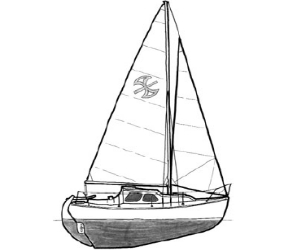 | LOA | 19′ 6″ |
| LWL | 16′ 6″ | ||
| Beam | 7′ 8″ | ||
| Draft | 3′ 3″ | ||
| Displacement | 2 520 lbs | ||
| Ballast | 1 026 lbs | ||
| Sail area | 188 sq. ft | ||
| Mast height | 30′ 3″ |
O’Day. O’Day has been producing sailboats for a long time, and was an early player in the field of fiberglass. You can still find a few of the old traditional hulls, like the O’Day Tempest, but more common are designs from the 1970s and 1980s, like the O’Day 22, 23, and 240.
Pearson. The Pearson company is another old name in the boatbuilding business. The company made history in 1959 when they introduced the Triton, a 28-footer. The economic recession of the early 1990s combined with a new luxury tax forced the company out of business. They had a reputation for building quality boats by famous designers, including Carl Alberg and William Shaw. Their trailerable-sized boats included:
- the 16-foot Hawk;
- the 22-foot Ensign (still in production by Ensign Spars);
- the Pearson 21;
- and the Pearson 24.
Seaward/Hake Yachts
Seidelmann. Robert Seidelmann was a sailmaker back in the 1960s, when boats using their sails won the National and World Championships in numerous classes. He focused then on boatbuilding, and Seidelmann Yachts built a number of boats from 24 to 37 feet. The last Seidelmann was built sometime in 1988.
It will be interesting: Technical Recommendations for Inspecting Your Boat
The 245 was introduced in 1982 and was built until sometime in 1985. At one point, the company built:
- a 24,
- the 245,
- and a 25.
They’re reported to be fast, able sailers. The keels are cast lead, with fiberglass centerboards, which is greatly preferred over other forms of ballast.
| Seidelmann 245 |  | LOA | 24′ 2″ |
| LWL | 20′ 6″ | ||
| Beam | 8′ 0″ | ||
| Draft | 1′ 1″/4′ 5″ (cb up/down) | ||
| Displacement | 3 000 lbs | ||
| Ballast | 1 300 lbs | ||
| Sail area | 267 sq. ft | ||
| Mast height | 32′ 9″ above waterline | ||
| Designer | Robert Seidelmann |
Tanzer

